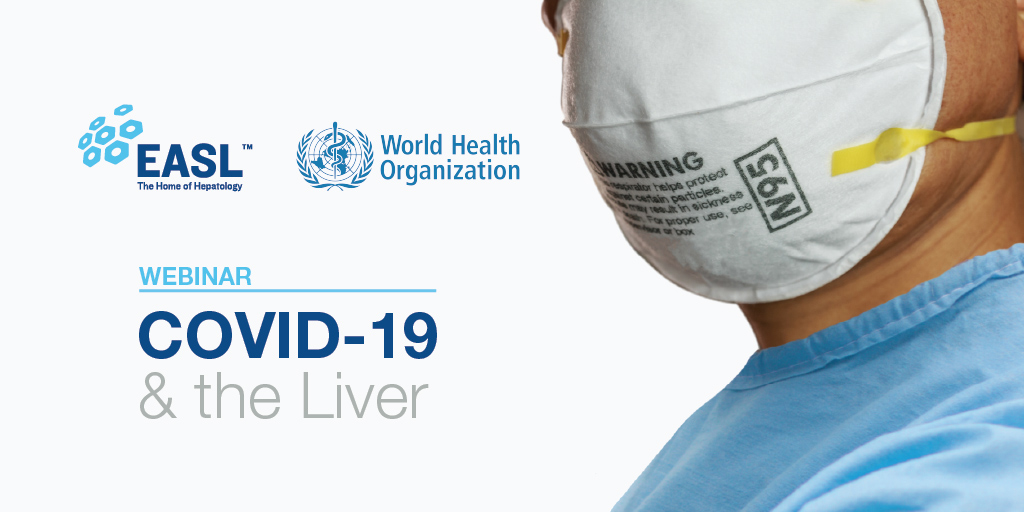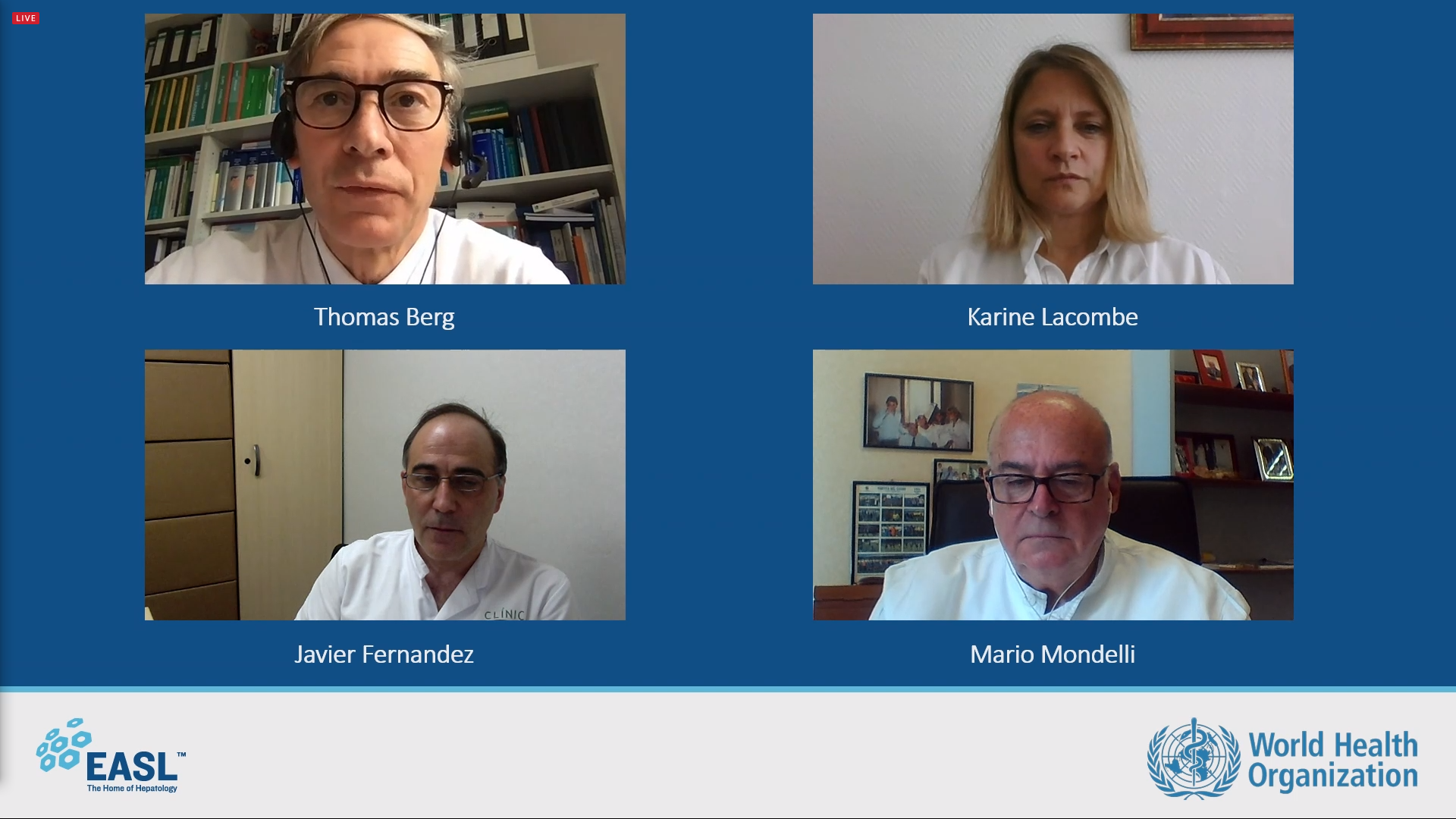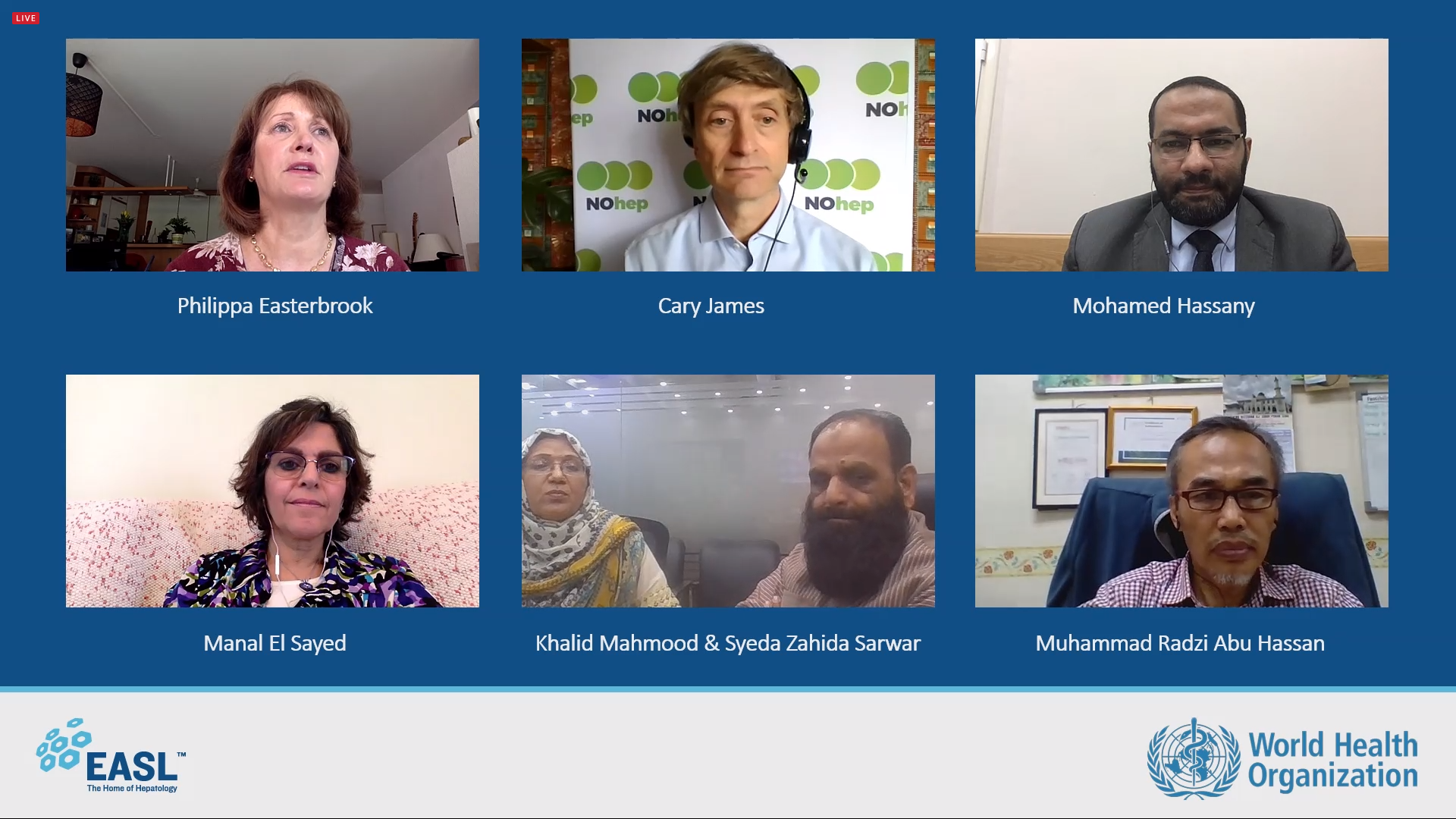COVID-19 triggers innovative collaboration in healthcare services, yet liver patient care suffers setbacks globally

In a webinar jointly run by EASL and the World Health Organization (WHO), virology and hepatology experts compared strategies in coping during the current pandemic. They described a rise in innovative, cooperative mitigating approaches, but noted that essential hepatitis and other liver-related services are suffering impediments and delays.
Similar setbacks were reported from hard-hit western Europe and from low- and middle-resource countries. The crisis, however, has created many innovative opportunities for healthcare providers to improve services locally and internationally.
In a jointly run webinar titled “COVID-19 & the Liver: Reports from the Frontline” held on 15 May 2020, EASL and the WHO convened a panel of leading, international experts in hepatology and virology to explore the status quo of liver care during the COVID-19 pandemic. Speakers included frontline clinicians and programme managers from different countries in western Europe (France, Italy, and Spain), from low- and middle-resource countries (Egypt, Malaysia, and Pakistan), and from the World Hepatitis Alliance. Frontline clinicians described their experiences of national responses to COVID-19, of managing the impact on hepatitis services during the crisis, and strategies for returning to normal.
Speakers reported many institutions cutting back or even being forced to provisionally shut down services deemed non-essential. Some reported shortages in medicines, cuts in research funding, the halting of trials, and staff shortages, as staff are allocated to COVID-19 wards. Hospital spaces have been restructured to create more ICU beds, including sometimes moving other patients to non-hospital settings (hostels, hotels, or dormitories).
A common goal is to reduce nosocomial (hospital-acquired) contagion, to protect both patients and healthcare professionals. There are concerns of a second wave of COVID-19 ahead, with the gradual loosening of lockdown measures, and subsequent waves of healthcare challenges triggered by a backlog of other illnesses.
All speakers mentioned a favourable increase in digital communications – whether by phone or videoconferencing – primarily telemedicine consulting with patients, but also collaborating with colleagues, and engaging with civil society or non-profit organisations.
Recent surveys of liver patients and patient associations, including one by the Global Hepatitis Alliance, showed that some patients are not accessing treatment, because they are afraid of being exposed to SARS-CoV-2 at hospital, aside from other practical barriers, such as reduced public transport.
“How we have responded to this viral crisis and the control measures we have implemented, have given us an opportunity to learn. We can apply this learning to other viral threats, such as viral hepatitis. This is a window of opportunity for us to foster our elimination strategies and to ultimately reach the WHO goal of eliminating hepatitis C by 2030,” said co-moderator, Prof. Thomas Berg, EASL Vice-Secretary General and Head of the Division of Hepatology, Department of Oncology, Gastroenterology, Hepatology, Pulmonology and Infectious Diseases at the University Clinic Leipzig, Germany.
Prof. Berg also mentioned two innovative and swiftly released resources to help liver care practitioners mitigate the crisis. The EASL-ESCMID Position Paper provides recommendations for clinicians caring for patients with liver diseases during the COVID-19 pandemic; and the EASL supported COVID-Hep registry serves to collate and study international data on liver patients also affected by COVID-19.
“Every government must do their best to bring the situation under control, so as to minimise its impact on health care services, including the hepatitis care. The sooner we steer the situation back on track, the sooner we can restore our services. Going forward, we will have to live with COVID-19 and adapt to the new norms, strategising to ensure the continuity of hepatology services in full,” said Dr Radzi bin Abu Hassan, Head of Gastroenterology and Hepatology Service, Ministry of Health, Malaysia.
Recommendations included: thorough COVID-19 screening for patients needing hospitalisation for any reason; maximising outpatient care; delivering patients’ medicines to their homes; providing liver patient organisations with information about how COVID-19 may affect them; and exploring how hepatitis screening might be integrated with vaccination programmes, including for children.
“This is above all an opportunity: to strengthen the healthcare system, the lab diagnostic capacity, and human resources training, as well as infection control to prevent new infections,” said Prof. Manal El Sayed, Professor of Pediatrics and Director of the Clinical Research Center at the Faculty of Medicine, Ain Shams University in Cairo, Egypt, founding member of the Egyptian National Committee for Control of Viral Hepatitis and Board member of the EASL International Liver Foundation.
Prof El Sayed continued: “As for research, the international community needs to engage and discuss it. For those cases where funding has been stopped or repurposed for COVID-19, we need to discuss mechanisms that can enable us to merge, so we can continue doing our research. Studying the impact of COVID-19 on liver disease and viral hepatitis might also help increase funding.”
To watch this full webinar and view information about the speakers, visit EASL Campus



